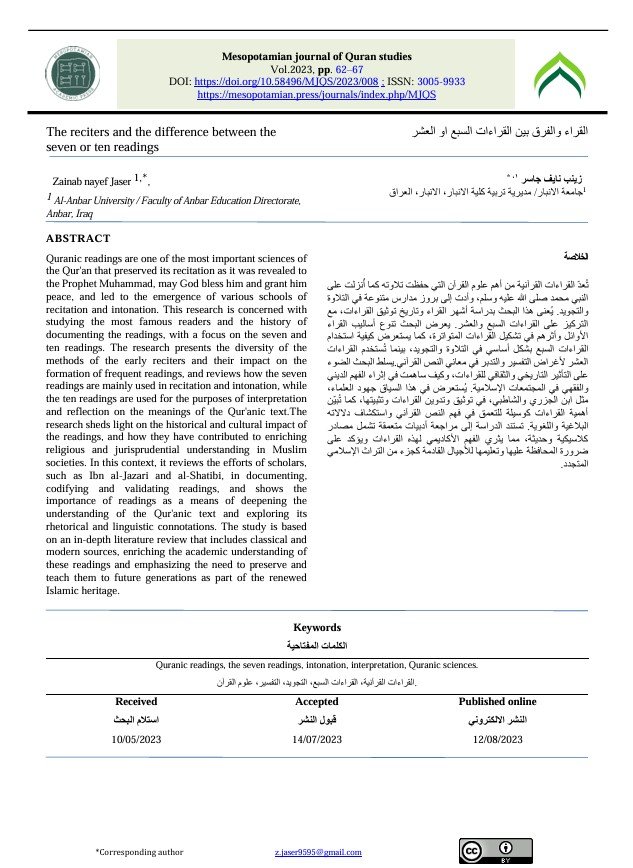The reciters and the difference between the seven or ten readings
Main Article Content
Abstract
Quranic readings are one of the most important sciences of the Qur'an that preserved its recitation as it was revealed to the Prophet Muhammad, may God bless him and grant him peace, and led to the emergence of various schools of recitation and intonation. This research is concerned with studying the most famous readers and the history of documenting the readings, with a focus on the seven and ten readings. The research presents the diversity of the methods of the early reciters and their impact on the formation of frequent readings, and reviews how the seven readings are mainly used in recitation and intonation, while the ten readings are used for the purposes of interpretation and reflection on the meanings of the Qur'anic text.The research sheds light on the historical and cultural impact of the readings, and how they have contributed to enriching religious and jurisprudential understanding in Muslim societies. In this context, it reviews the efforts of scholars, such as Ibn al-Jazari and al-Shatibi, in documenting, codifying and validating readings, and shows the importance of readings as a means of deepening the understanding of the Qur'anic text and exploring its rhetorical and linguistic connotations. The study is based on an in-depth literature review that includes classical and modern sources, enriching the academic understanding of these readings and emphasizing the need to preserve and teach them to future generations as part of the renewed Islamic heritage.
Article Details
Issue
Section

This work is licensed under a Creative Commons Attribution-ShareAlike 4.0 International License.
Deprecated: json_decode(): Passing null to parameter #1 ($json) of type string is deprecated in /home/u273879158/domains/mesopotamian.press/public_html/journals/plugins/generic/citations/CitationsPlugin.php on line 68
